Modules
INTRODUCTION TO AUDIOVISUAL TRANSLATION (EQUIVALENCE: 2 ECTS CREDITS)
- Introduction to audiovisual translation
- Translation techniques applied to audiovisual texts
- Specific problems posed by audiovisual translation
- Production scripts
- Documentation resources for audiovisual translation
- Online resources and documents
- Techniques for documentation searches
- Analysis and commentary on previously completed documentation
FACULTY
Dr. Leonor Acosta (Universidad de Cádiz)
Dr. Marta Chapado Sánchez (ISTRAD)
Dr. María José Chaves (Universidad de Huelva)
Dr. Juan José Martínez Sierra (Universitat de València)
Dr. Laura Santamaria (Universitat Autònoma de Barcelona)
Dr. Patrick Zabalbeascoa (Universidad Pompeu Fabra - Barcelona)
CONTENT
Introduction and preliminary translation task
Documentation techniques applied to audiovisual translation
COMPETENCIES
Upon completing this subject, students will possess the necessary tools and skills to develop an in- depth and applied understanding of audiovisual translation (AVT). They will acquire a solid understanding of the theoretical foundations of the discipline and will become familiar with the historical context of AVT, understanding its evolution and the influence that cultural and technological changes have had. Finally, they will learn a series of documentation techniques in order to prepare for a translation.
TRANSLATION APPLIED TO SUBTITLING (EQUIVALENCE: 12 ECTS CREDITS)
- Becoming familiar with media players
- Becoming familiar with subtitling protocols
- Becoming familiar with different types of subtitle templates
- Applying subtitling protocols when translating subtitling files
- Free programs: Aegisub, VisualSubSync, Subtitle Edit
- Professional programs: FAB Subtitler, Ooona
- Online programs
- Preparing the subtitles
- Video editors
- The burning process
FACULTY
Rocío Arévalo (MediaSur)
Dr. Rocío Baños-Piñero (University College London)
Ivars Barzdevics (subtitling and dubbing specialist)
Carlos Benito (subtitling and dubbing specialist)
Filippo Casarino (subtitler)
Alejandro Carantoña Fajardo (subtitler)
Dr. Marta Chapado Sánchez (ISTRAD)
Jorge Díaz Cintas (University College London)
Rosel Jiménez (Rosel JM Traducciones)
Dr. Anjana Martínez Tejerina (Universitat de Vic)
Megan Mundt (ISTRAD)
Sharon Mishell Rivera Lamadrid (subtitler)
Dr. Mar Ogea Pozo (Universidad de Córdoba)
Dr. Guillermo Parra (Universitat Pompeu Fabra)
Javier Rebollo Trigueros (Ampersound Translate Media)
Aitor Rodríguez Rodríguez (Go Global Consulting)
Viola Santini (WordUp!)
María Vidal Rodríguez (ISTRAD)
CONTENT
Media players and subtitling protocols
Translating templates
Subtitling programs
Permanently burning subtitles
COMPETENCIES
Upon completing this subject, students will possess the necessary tools and skills to subtitle different types of audiovisual products. They will acquire an in-depth knowledge of the most common protocols in this area and how to apply them, as well as learning how to time subtitles using free tools and professional programs, guaranteeing that the text is precisely synchronized with the audio and creating high-quality files adapted to market demands.
TRANSLATION APPLIED TO DUBBING (EQUIVALENCE: 10 ECTS CREDITS)
- Stages of the dubbing process
- Translation characteristics of film dubbing
- Work tools and documentation resources Synchrony
- Complementing image and sound
- Frequent errors in translation for dubbing
- Practical examples
- The professional world of dubbing
- Translation and synchronization applied to film, TV series and animation
- What materials do we need to carry out the dubbing process?
- Stages of the dubbing process: registering materials, translation, synchronizing the script, dividing into takes, assigning voices and duration of dubbing
- Using voice-over
- Definition and submodalities
- Voice-over standards (original scripts, the look of the translated script, symbols, takes, etc.)
- Translation problems related to voice-over (documentaries, interviews, corporate videos, etc.)
- Synchronization for voice-over
- Translation and synchronization practice
FACULTY
Ivars Barzdevics (subtitling and dubbing specialist)
Fernando Castillo (Ampersound Translate Media)
Xosé Castro (subtitling and dubbing specialist)
Valeria Cervetti (dubbing and synchronization specialist)
Dr. Marta Chapado Sánchez (ISTRAD)
Ana Cremades (Translation and synchronization specialist)
Aida Franch Arnau (UAB and UPF)
Dr. Nina Lukic (voice-over specialist)
Dr. Anjana Martínez Tejerina (Universitat de Vic)
Megan Mundt (ISTRAD)
Sharon Mishell Rivera Lamadrid (subtitler)
Quico Rovira-Beleta (dubbing and synchronization specialist)
María Vidal Rodríguez (ISTRAD)
CONTENT
Introduction and dubbing protocols
Translation applied to dubbing
Lip synchronization techniques
Translation for voice-over
COMPETENCIES
Upon completing this subject, students will possess the necessary tools and skills to translate different audiovisual products for dubbing and voice-over. They will acquire an in-depth understanding of the most common synchronization techniques and symbols in order to effectively adapt the original content to the dubbed format, ensuring precise synchronization and naturalness.
SUBTITLING FOR THE DEAF AND HARD OF HEARING (SDH) (EQUIVALENCE: 6 ECTS CREDITS)
- Communication barriers for the hard of hearing: the definition of deafness, types of deafness and their causes
- Subtitling for the hard of hearing: the definition of subtitling, the beginnings, evolution and current state of Spanish and European subtitling, types of subtitling
- Standards of practice. UNE-153010: Terminology and definitions, general characteristics, colors, font size, subtitle display time, spelling and grammar criteria
- Practical examples
- Subtitling films and clips
- Applying subtitling for the hard of hearing protocols
- Description and use of specific Aegisub, VisualSubSync and Subtitle Edit features in subtitling for the hard of hearing
FACULTY
Dr. Marta Chapado Sánchez (ISTRAD)
Pedro Gómez Rivera (accessibility specialist)
Antonio Humanes Ochavo (MediaSur)
Dr. Christiane Limbach (Universidad Pablo de Olavide)
Dr. Lourdes Lorenzo Rodríguez (Universidad de Vigo)
Samantha Mayordomo (accessibility specialist)
Dr. Ana Pereira Rodríguez (Universidad de Vigo)
María Vidal Rodríguez (ISTRAD)
CONTENT
Introduction and protocols
Subtitling programs for the deaf and hard of hearing
COMPETENCIES
Upon completing this subject, students will possess the necessary tools and skills to carry out subtitling for the deaf and hard of hearing for different audiovisual products, applying the protocols specific to this type of subtitling. This includes developing the practical skills to ensure accessible communication in accordance with the UNE standard that regulates this practice.
AUDIO DESCRIPTION (AD) (EQUIVALENCE: 4 ECTS CREDITS)
- Audio description for the blind
- The language of film and television
- Carrying out the preliminary analysis
- Formal matters
- Prioritizing information
- Audio description timing practice
FACULTY
Esmeralda Azkarate-Gaztelu (accessibility specialist)
Dr. Marta Chapado Sánchez (ISTRAD)
Pedro Gómez Rivera (accessibility specialist)
Javier Jiménez Dorado (APTENT)
Viviana Merola (accessibility specialist)
CONTENT
Introduction and protocols
Film analysis applied to audio description
Creating scripts for audio description projects
COMPETENCIES
Upon completing this subject, students will possess the necessary tools and skills to understand and use the most common techniques applied to audio description for the blind, in accordance with the UNE standard that regulates this practice. In addition, they will be able to create precise audio description scripts adapted to audience needs.
PROJECT MANAGEMENT (EQUIVALENCE: 4 ECTS CREDITS)
- Introduction to project management: definition of a project and general concepts
- Variables in project management
- Project phases and delivery deadlines
- Project management in the field of audiovisual translation
FACULTY
Marco Cevoli (Qabiria)
Belén Ortega (Acolad Group)
CONTENT
Project management
COMPETENCIES
Upon completing this subject, students will possess the necessary tools and skills to manage different types of audiovisual translation projects.
ARTIFICIAL INTELLIGENCE IN THE SECTOR (EQUIVALENCE: 2 ECTS CREDITS)
- The potential of AI: how to improve productivity
- Risks of AI: confidentiality agreements, job insecurity, environmental impact
- LLMs in the market: ChatGPT, Perplexity, NotebookLM...
- Clarity, context and structure in designing prompts
- Controlling creativity, length and coherence in the responses
- Support tools for designing and refining prompts
- Practical applications in translation, marketing and multilingual content generation
FACULTY
Sandra Lara Arjona (Nóvalo Language Creatives)
CONTENT
Efficient and respectful use of AI
Prompt engineering
COMPETENCIES
Upon completing this subject, students will possess the necessary tools and skills to understand how artificial intelligence tools work in order to learn how to efficiently, responsibly and ethically integrate them into their professional work. They will also know how to structure questions and commands to maximize the precision and relevance of the responses generated by LLMs.
APPLIED MODULE (EQUIVALENCE: 10 ECTS CREDITS)
To complete this module, students will choose one (1) of the following three (3) options:
Project. Complete a project in the field of audiovisual translation. This option must be completed remotely.
Internship. This modality consists of completing an internship at a company dedicated to translation, language services or the audiovisual sector. The process of arranging and signing the internship agreement will be handled by the Internship Department and students may choose their preferred modality, also taking into consideration the preferences of the companies available at the time. The workload will be 250 hours.
Work recognition. Previous work as an employee or freelancer can be recognized by submitting the required documentation. This work must be related to translation or related fields (proofreading, quality control, project management, etc.).
TFM MODULE (EQUIVALENCE: 10 ECTS CREDITS)
Depending on the option chosen for the Applied Module, students will complete one (1) of the following three (3) projects
Project TFM. This consists of writing a report that describes the process followed to translate the project. It will consist of a theoretical portion in which the theoretical concepts related to the translation project must be presented, and a more practical component in which the problems and difficulties faced and proposed solutions are analyzed. Solo se realizará en caso de haber elegido la opción Proyecto en el Módulo Aplicado.
Internship TFM. This consists of writing a report that describes the internship period. It will consist of a theoretical portion in which the theoretical concepts related to the activities carried out during the internship are presented (if a variety of activities were carried out, students may choose just one or several), and a more practical component in which the problems and difficulties faced and proposed solutions are analyzed. This option can only be completed if the internship opción was chosen for the Applied Module.
Work recognition TFM. This consists of writing a report that describes the recognized work activity. It will consist of a theoretical portion in which the theoretical concepts related to the activities carried out during the recognized professional experience are presented (if a variety of activities were carried out, students may choose just one or several), and a more practical component in which the problems and difficulties faced and proposed solutions are analyzed. This option can only be completed if the work recognition option was chosen for the Applied Module.
Consulta el pdf del programa académico.


